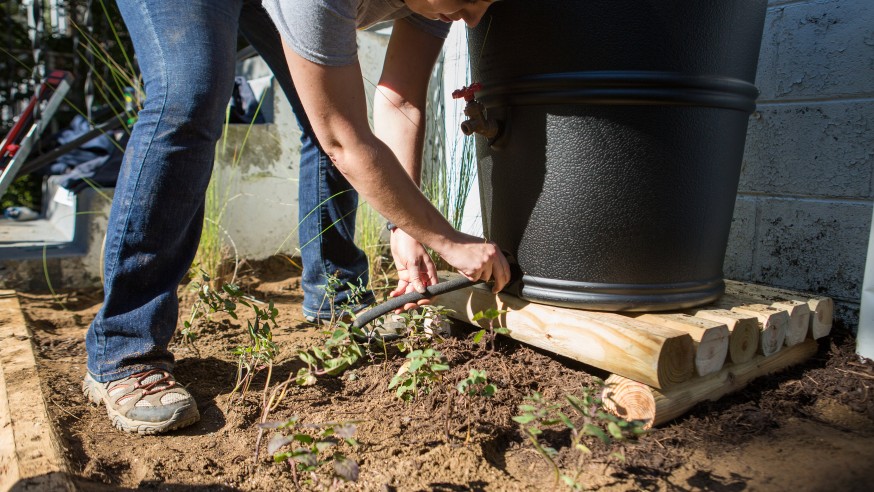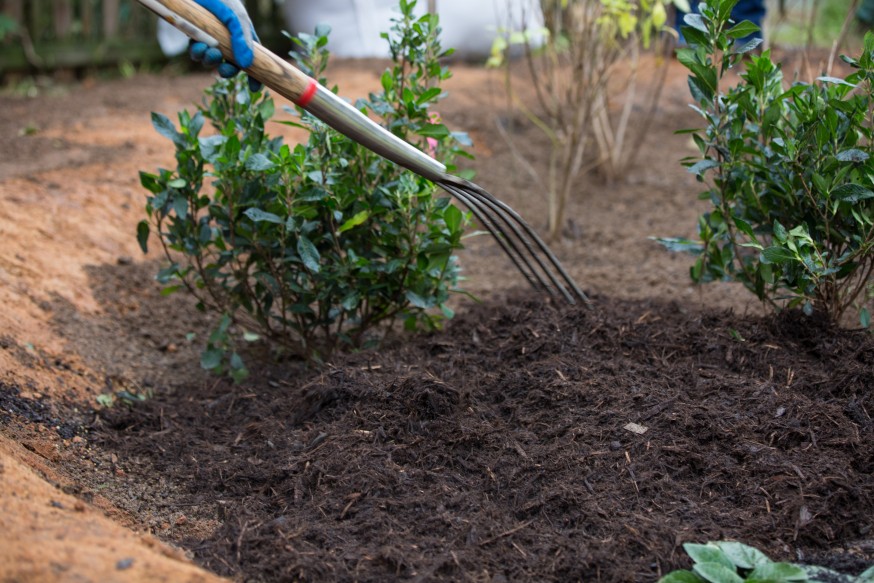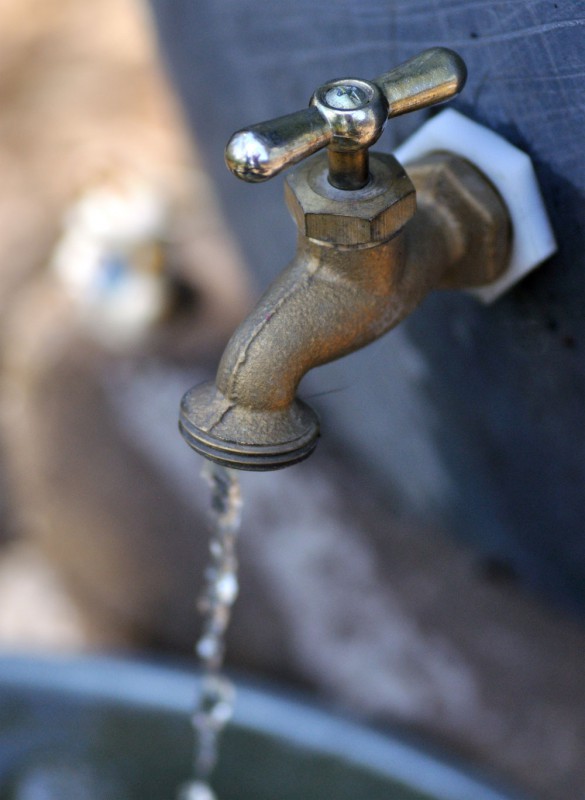Taking Care of BMPs in the Winter
When it comes to runoff, some of us might freeze when it comes to reducing stormwater in the wintertime. Here are some tips to maintain the practices we’ve talked about so far and keep them in tip-top shape, so you have more time to chill and have a snowball fight (or two).

Remove and store all your rain barrel’s accessories such as hoses. Make sure to disconnect your barrel from the gutter, because if ice freezes inside it may crack the barrel and make it useless!
If you have a rain barrel, you know you should already inspect it each month to make sure all the parts are in working order and keep it free of debris. In the winter months, rain barrels can be damaged by water, which expands as it freezes. This can damage the tubing, or even burst the barrel entirely! To prevent this, before the first freeze you should fully drain the barrel by opening the spigot and tilting it. This is also a good time to scrub out the barrel. Then, store it upside down in a garage, basement, or covered with a tarp away from the wind and snow. You can re-install the barrel after the last freeze in the spring.
Expanding ice can also be a concern if you have pervious pavers on your property. Typical pavement cracks under the pressure when water flows into fractures and freezes inside the material, causing frost heave. You might think that pervious pavers that absorb water could also be affected. However, this pavement is designed to drain and remains porous, resisting frost heave.
To maintain pervious pavers in the winter, avoid using sand that could clog them, or salt that would directly enter the groundwater. You should not need to apply a lot of de-icers to the pavers anyways. Pervious pavers can reduce rates of de-icer usage up to 70% (Houle 2008). With no standing water, there’s no worry about black ice. Snow can be removed with a plow as long as you set the blade about an inch higher than normal to avoid scuffing the pavers.

Make sure your rain garden has a warm blanket of mulch for the winter.
For rain gardens, you should check the mulch and ponding depths, which should be 3 and 6 inches respectively. Rake away any leaves that have fallen in the rain garden. Shovel or plow any snow that blocks access, however fallen snow does not need to be removed from the rain garden.
Next, check for any erosion or berm settling. Erosion will look like soil deposits in sloped areas or “channels” running through the rain garden. Reinforce areas that have experienced erosion, and cover with mulch to prevent it in the future. Finally, keep pruning to a minimum. Pruning encourages new growth, which will be damaged by the cold. You can also divide plants at this time, although common rain garden plants like muhly grass are more easily divided in the spring.
For more information, visit:
Rain Barrels (via Alliance for the Chesapeake Bay)
How to Winterize Your Rain Barrel (via HGTV)
Pervious Concrete and Freeze-Thaw (via PCA)
Permeable Pavements (via Pavement Interactive)
Porous Pavement Performance in Cold Climates (via Stormwater Report)
A guide to tucking in your rain garden for winter (via My Green Montgomery)
Routine Maintenance Activities for Rain Gardens (via Blue Water Baltimore)
